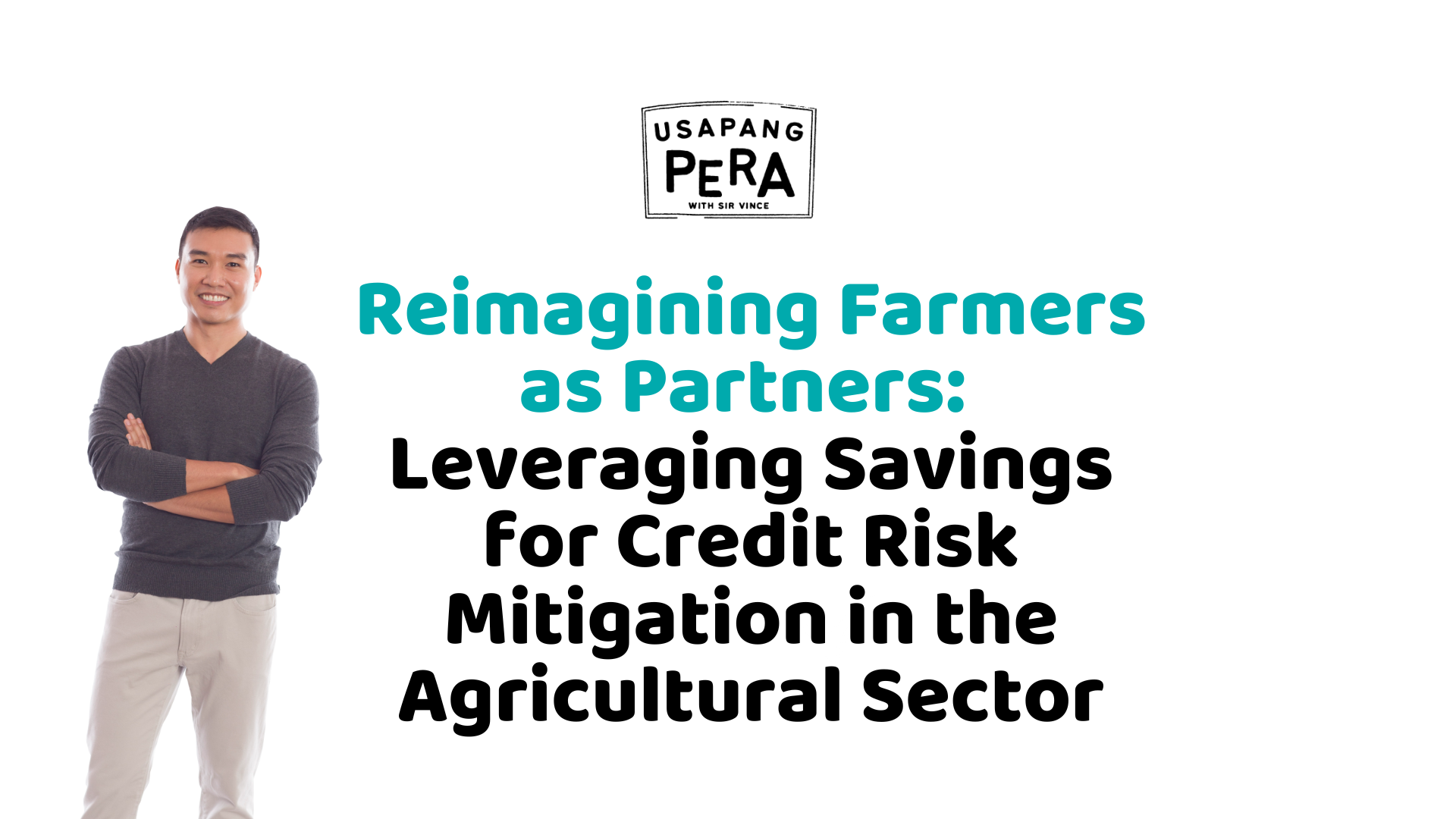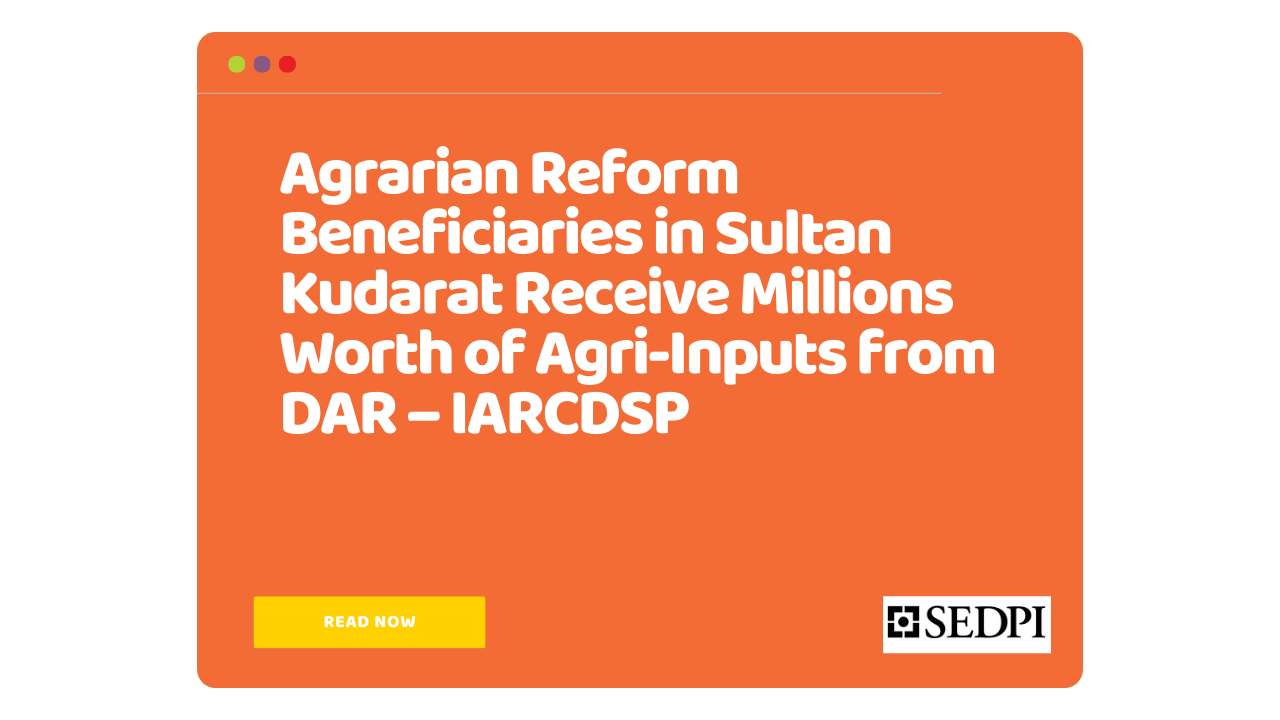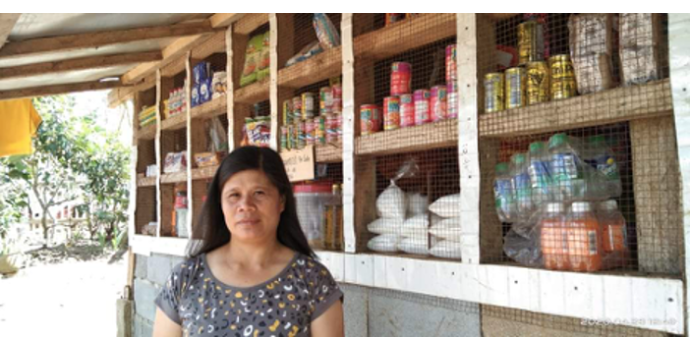Tag: Social entrepreneur
-

Reimagining Farmers as Partners: Leveraging Savings for Credit Risk Mitigation in the Agricultural Sector
Delivered on May 23, 2023 at the Agricultural Credit Policy Council event held at the PICC Financial inclusion remains an essential factor for sustainable economic development, particularly in the realm of the agricultural sector. Having access to a broad range of financial services – which includes not only credit but also savings, insurance, and money…
-

SEDPI at Ambagan PH Tumulong sa mga Nasalanta ng Bagyong Vicky
Agad na nag-abot ng tulong ang SEDPI at Ambagan PH sa 1,884 na nasalanta ng bagyong Vicky sa Agusan del Sur at Surigao del Sur. Matapos ang tuloy-tuloy na ulan na dulot ng bagyong Vicky sa Mindanao nagdulot ito ng pagbaha at landslide. Kasama sa naapektuhan ay ang mga residente ng Agusan del Sur at…
-

Microinsurance: Abot-kayang klase ng insurance
Pinaka-essence ng insurance ang pooling of risks over a large number of similar units such as households, persons or businesses. Inispread natin ang risk para yung financial loss ay hindi lang sa atin tatama. Insurance should not be treated as an investment Hindi dapat pinagkakakitaan ang insurance dahil hindi ito investment. Para itong bayanihan, you…
-

Forms of insurance
May apat na forms ang insurance – formal, informal, public at hybrid. Pooling of risks over a large number of similar units such as households, persons or businesses ang insurance. Inispread ang risk para ang financial loss ay hindi pasan lamang ng iisa kundi ng marami. Formal insurance Galing sa corporations and cooperatives ang formal…
-

Agrarian Reform Beneficiaries in Sultan Kudarat Receive Millions Worth of Agri-Inputs from DAR – IARCDSP
Pandemic or not, farmers in Mindanao tirelessly till the soil. This is why the Department of Agrarian Reform, together with SEDPI, continue to work while majority of the population are on a standstill to bring the most awaited agri-input investments from the DAR – Italian Assistance to ARC Development Support Program (IARCDSP) to our farmers. …
-

Blockchains: Where does Bitcoin come from?
If central banks print currencies, where does Bitcoin come from? Blockchain Bitcoin enigmatically appeared in the Internet. Satoshi Nakamoto, its unknown originator, used blockchain technology in order to create Bitcoin. Blockchains are democratized “public” ledgers. Ledgers are the recordkeeping books that accountants and bookkeepers typically use. Thus, blockchains are one method of record-keeping. Because blockchain…
-
SEDPI’s Group Yearly Renewable Term Insurance
SEDPI offers Group Renewable Term Insurance (GYRT) in partnership with CLIMBS, a service more catered to common Filipino households. Term insurance provides protection against emergencies for a specific period of time. As lifetime coverage is not always needed, term insurance provides cheaper premiums with larger benefits. On average, investment-linked insurance schemes charge PhP80,000 in premiums.…
-

What qualifies as microinsurance in the Philippines?
Insurance involves pooling risk over a large number of similar units such as households, persons, or businesses. It protects people and businesses against financial loss by spreading their risk among large numbers, and is similar to the concept of “bayanihan.” Insurance is not an investment. You are not after financial gain. It is for protection…
-

Never too small for hope (sari-sari store) – International Day of Rural Women 2020
Mary Jane Selecia is a mother of five who lives in a rural community in Upi, Maguindanao in the Philippines. She runs a sari-sari store (corner store) in her community. COVID-19 has significantly affected their household and community. To mitigate the spread of COVID-19, the government imposed community quarantine measures which includes physical distancing, movement…
-

Almost 4 in 10 nanoenterprises bounce back to pre-pandemic level
Update 10: SEDPI Rapid community assessment on the impact of COVID-19 to nanoenterprises Two months after the government started easing lockdowns in most parts of the country, 36% of nanoenterprises reported to have bounced back to pre-pandemic level. In May, only 18% expected to bounce back within one month which may be a good sign…